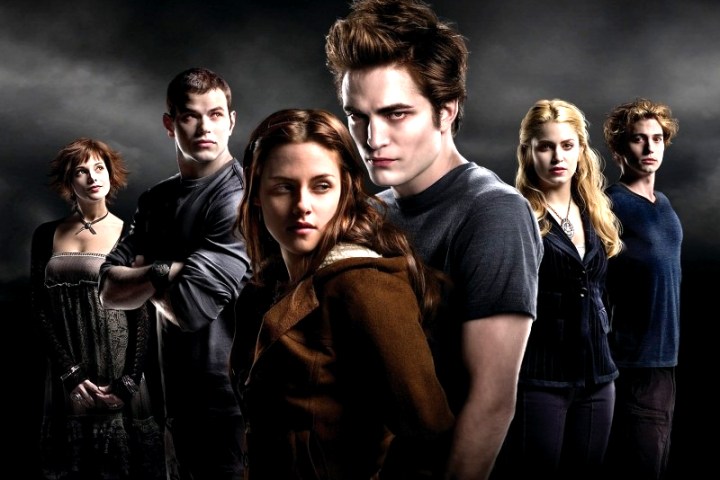Sci-Tech
Twilight: Girls love a vampire

As Twilight: Breaking Dawn hits cinemas worldwide, the time has surely come to ask: what on earth is up with the success of this vampire franchise? By REBECCA DAVIS.
Let’s start with the basics. In case you have been held prisoner in an underground bunker for the last six years, Twilight is a four-part vampire-themed novel series by the American author Stephenie Meyer, with the first instalment published in 2005. Filmic adaptations followed from 2008, and the latest, Twilight: Breaking Dawn, arrived on screens worldwide this week.
The success of Twilight has been, simply, phenomenal. The books have sold well over 100 million copies worldwide (the figure stood at 116 million last October). The first three films took more than $1.8 billion worldwide and the latest instalment is guaranteed to rack up comparable sales. Twilight fans – known as “Twihards” – are some of the most obsessed around. The town in which the books are set – the nondescript Forks, Washington – has experienced an unprecedented tourism boom since the publication of the books. The films’ stars, and in particular the young English heartthrob Robert Pattinson, have been catapulted to stratospheric fame. In 2010 Pattinson was named as one of Time Magazine’s 100 Most Influential People in the world.
There is only one sensible parallel with the popularity of the Twilight series, and that is the publishing sensation that was Harry Potter. Both series were written for a younger age-group (though in Harry Potter’s case, that group was younger than the target-market of Twilight, which is pitched at teenage girls in particular) but both found appeal with adult audiences also. Writing for Time in 2008, Lev Grossman suggested that the two series were similar in that their authors had created very detailed and well-imagined alternative worlds: “There’s no literary term for the quality Twilight and Harry Potter (and The Lord of the Rings) share,” he wrote, “but you know it when you see it: their worlds have a freestanding internal integrity that makes you feel as if you should be able to buy real estate there”.
Other critics feel that this comparison does no favours to the Harry Potter franchise and its author, JK Rowling. Writer Stephen King denounced Twilight author Stephenie Meyer as not being able to “write worth a darn”, in an interview with USA Weekend in 2009. King reportedly said, in a bitchily effective summary of both series’ themes: “Harry Potter is all about confronting fears, finding inner strength, and doing what is right in the face of adversity. Twilight is about how important it is to have a boyfriend.”

King is partially right: Twilight is indeed preoccupied with the issue of teenage relationships. But the essential theme might more accurately be rephrased as: “Twilight is about how important it is to have a boyfriend and not have sex with him before marriage.” The books’ author, Stephenie Meyer, is a practising Mormon who has said that she was opposed to her characters having pre-marital sex. The major relationship of the Twilight series is between a non-vampire human, Bella, and a vampire, Edward. Barely a page goes by without reference to Edward’s perfect physical form and Bella’s desire for him, and Edward is similarly described as intoxicated by Bella’s blood. In other words, these kids are dying to do the nasty with each other. But they cannot – partly because Edward is so old-worldly and chivalrous (he is technically more than 100 years old, despite his peachy complexion), and partly because he fears that his stupendous vampirish strength may cause him to kill her (or suck her blood dry, or something) during sex. As a result, much of the series is taken up with their agonisingly unconsummated lust. Writing for the Huffington Post in 2008, Sarah Seltzer makes the point that: “Like American culture itself, Twilight is both lascivious and chaste.” The feminist bloggers at the unsubtly-titled Bitch Magazine have criticised Meyer for creating a kind of “abstinence porn”, which they suggest objectifies the female character in much the same ways that “real” porn does.
But clearly the fans don’t mind. Which brings us to the central question: why have these books and films succeeded so well in capturing the hearts and minds of half a generation? For a start, vampires have never been as hot in popular culture as they are today. Twilight is just one of a slew of vampire-themed cultural products in recent years: Buffy the Vampire Slayer, True Blood and The Vampire Diaries have all been smash-hit TV series in the last decade. Fantasy writer Neil Gaiman suggested in a 2009 interview that what gave vampires a new lease on life in the pop-culture domain was Aids. “You hit the early ’80s, and suddenly you have something in the blood that is an exchange of blood that kills and is altogether fundamentally about sex,” he said. “Vampirism essentially came out of the closet as a metaphor for the act of love that kills.”
If you find that line too glib to swallow easy, consider too that the “bad-boy” persona has been a dominant trope of romantic books and films for centuries. A male vampire is the ultimate bad boy. At least in these most recent incarnations, he has both the power and instinct to kill women, but battles against his nature because he really, really loves them, too. Swoon. As Salon’s Laura Miller puts it, the “fantasy of being delivered from obscurity by a dazzling, powerful man, of needing to do no more to prove or find yourself than win his devotion, of being guarded from all life’s vicissitudes by his boundless strength and wealth – all this turns out to be a difficult dream to leave behind”.
You might wish that teenage girls were absorbing a different “fantasy” to this one, but that won’t stop cinemas all over South Africa being packed out this weekend. DM
Read more:
- Stephenie Meyer: A New JK Rowling? in Time;
- Twilight: Sexual Longing in an Abstinence-Only World, on the Huffington Post;
- Bite Me! (Or Don’t), in Bitch Magazine;
- Neil Gaiman: Why vampires should go back underground, in Entertainment Weekly;
- Touched by a vampire, on Salon.






 Become an Insider
Become an Insider